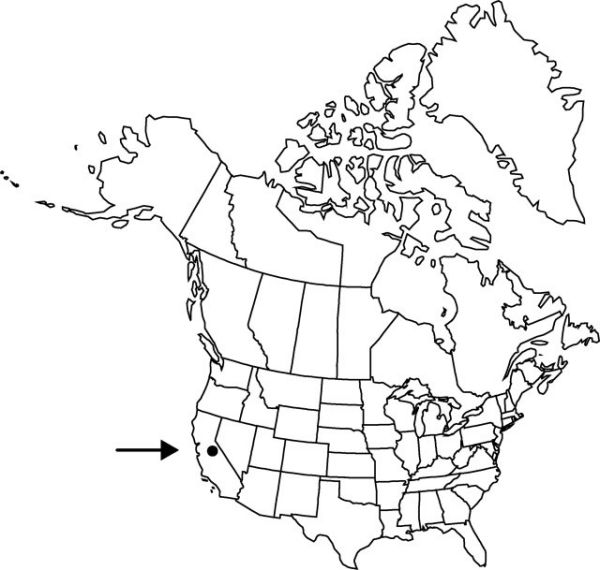Allium yosemitense
Leafl. W. Bot. 1: 132. 1934.
Bulbs 1–12+, not basally clustered on stout primary rhizome, ovoid, 2–3 × 1.5–2 cm; outer coats enclosing 1 or more bulbs, brown, membranous, lacking cellular reticulation or cells arranged in only 2–3 rows distal to roots, ± quadrate, without fibers; inner coats white, cells very obscurely quadrate or not visible. Leaves usually deciduous with scape, withering from tip at anthesis, 2, basally sheathing, sheaths not extending much above soil surface; blade solid, flat or very broadly channeled, ± falcate, 15–40 cm × 2–18 mm, margins entire. Scape usually forming abcission layer and deciduous with leaves after seeds mature, frequently breaking at this level after pressing, solitary, erect, solid, terete, 6–23 cm × 1–3 mm. Umbel persistent, erect, compact, 20–100-flowered, globose to hemispheric, bulbils unknown; spathe bracts persistent, 2–4, 7–9-veined, ovate, ± equal, apex acuminate. Flowers campanulate, 7–15 mm; tepals erect, white to pink with darker midveins, linear-oblong, ± equal, becoming membranous in fruit, margins entire, apex acute; stamens ± equaling tepals; anthers yellow or purple; pollen yellow; ovary crested; processes 3, 2-lobed, minute, margins entire; style short-exserted, linear; stigma capitate, scarcely thickened, unlobed; pedicel 7–34 mm. Seed coat dull; cells ± smooth. 2n = 14.
Phenology: Flowering May–Jun.
Habitat: Moist soil along cracks and margins of large metamorphic outcrops
Elevation: 800–2200 m
Discussion
Of conservation concern.
Allium yosemitense is known only from the central Sierra Nevada.
Selected References
None.

